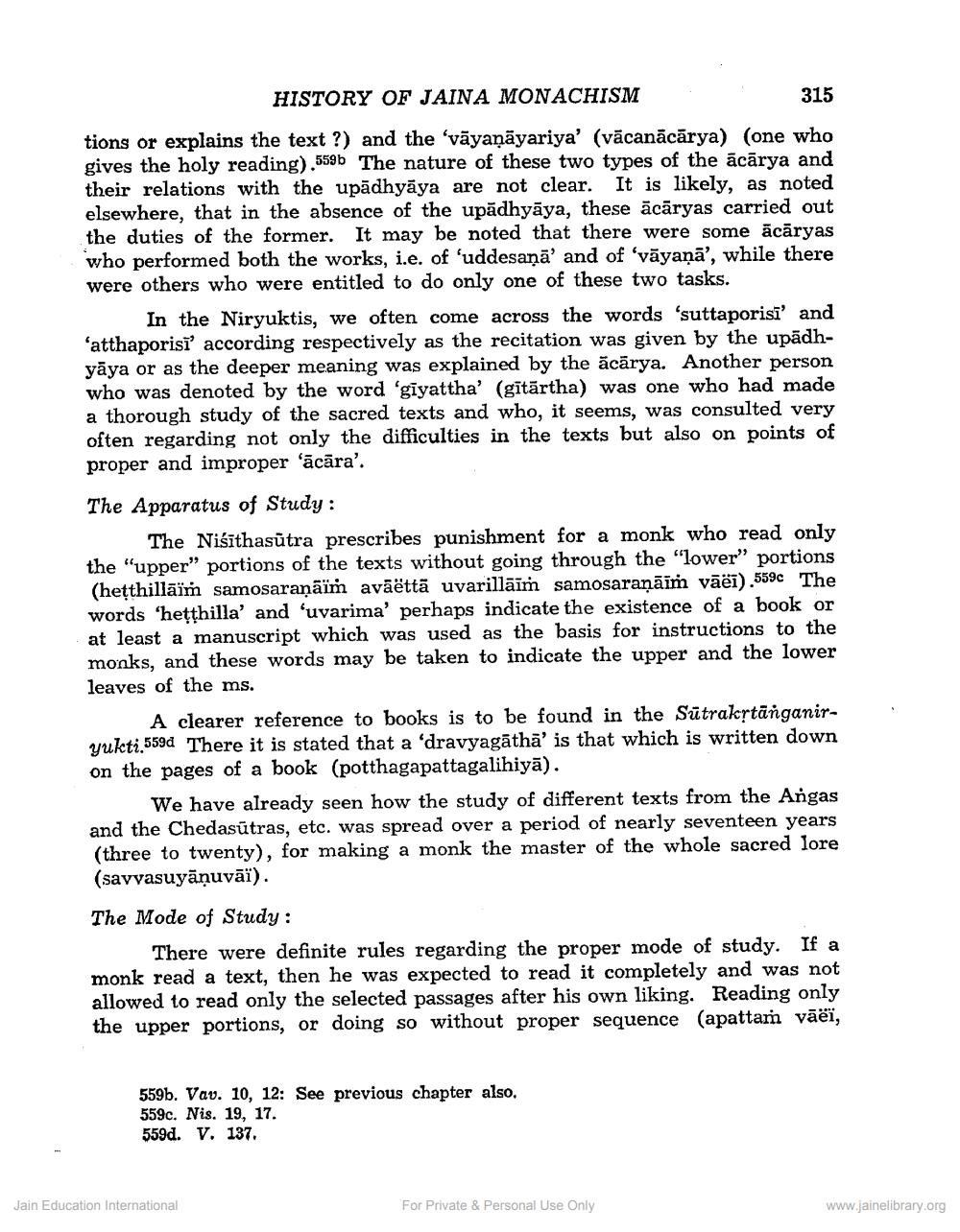________________
HISTORY OF JAINA MONACHISM
315
tions or explains the text?) and the 'vāyaṇāyariya' (vācanācārya) (one who gives the holy reading). The nature of these two types of the äcärya and their relations with the upadhyāya are not clear. It is likely, as noted elsewhere, that in the absence of the upadhyaya, these äcāryas carried out the duties of the former. It may be noted that there were some ācāryas who performed both the works, i.e. of 'uddesana' and of 'vāyaṇā', while there were others who were entitled to do only one of these two tasks.
In the Niryuktis, we often come across the words 'suttaporisi' and 'atthaporis' according respectively as the recitation was given by the upādhyaya or as the deeper meaning was explained by the äcärya. Another person who was denoted by the word 'giyattha' (gitärtha) was one who had made a thorough study of the sacred texts and who, it seems, was consulted very often regarding not only the difficulties in the texts but also on points of proper and improper 'ācāra'.
The Apparatus of Study:
The Nisithasūtra prescribes punishment for a monk who read only the "upper" portions of the texts without going through the "lower" portions. (hetthillaim samosaranaiṁ aväättä uvarilläim samosaraṇāim väči),500 The words 'hetthilla' and 'uvarima' perhaps indicate the existence of a book or at least a manuscript which was used as the basis for instructions to the monks, and these words may be taken to indicate the upper and the lower leaves of the ms.
A clearer reference to books is to be found in the Sütrakṛtānganiryukti,550 There it is stated that a 'dravyagatha' is that which is written down on the pages of a book (potthagapattagalihiyā).
We have already seen how the study of different texts from the Angas and the Chedasūtras, etc. was spread over a period of nearly seventeen years (three to twenty), for making a monk the master of the whole sacred lore (savvasuyänuvāï).
The Mode of Study:
There were definite rules regarding the proper mode of study. If a monk read a text, then he was expected to read it completely and was not allowed to read only the selected passages after his own liking. Reading only the upper portions, or doing so without proper sequence (apattaṁh väëî,
559b. Vav. 10, 12: See previous chapter also.
559c. Nis. 19, 17.
559d. V. 137.
Jain Education International
For Private & Personal Use Only
www.jainelibrary.org




